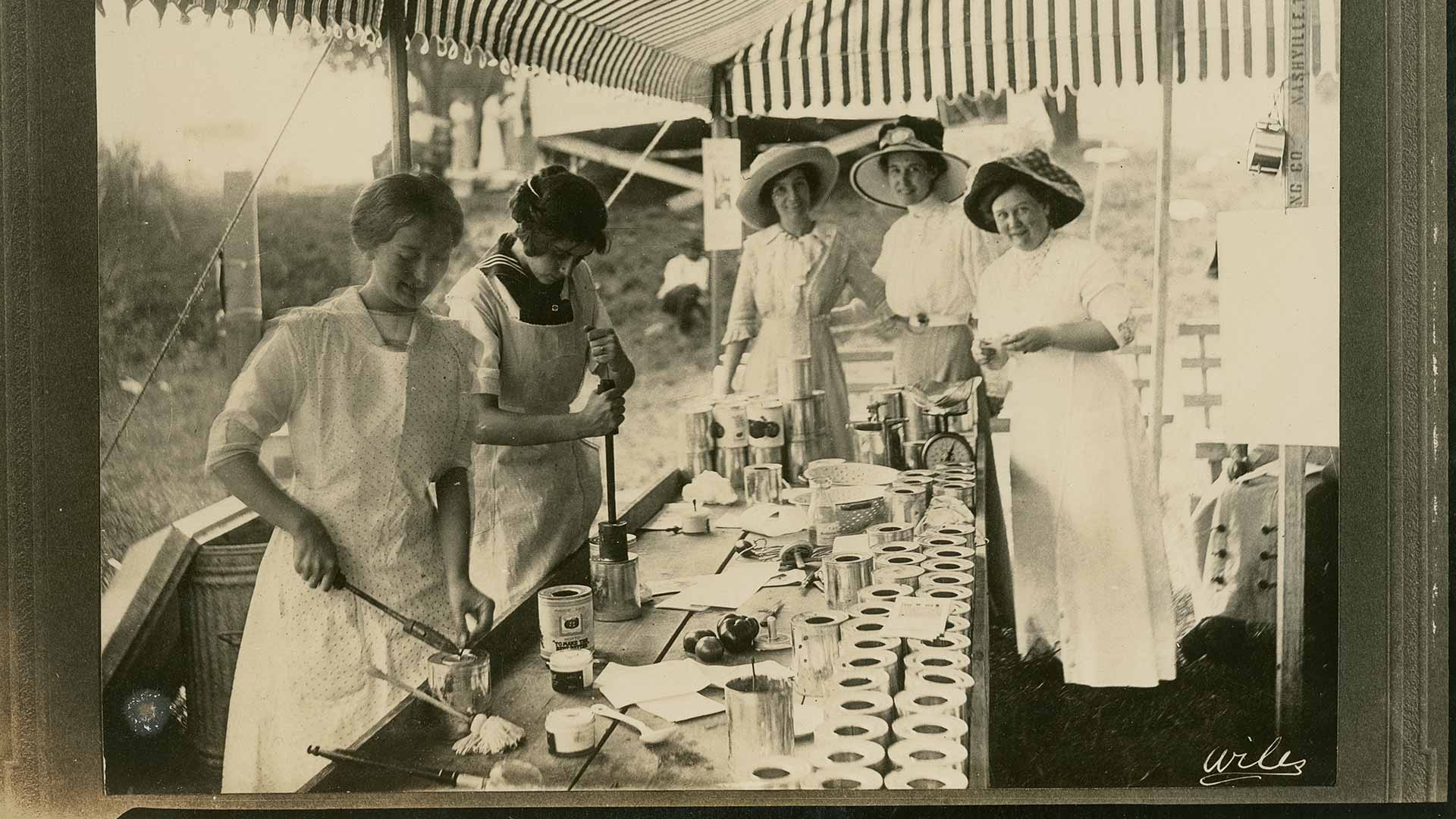UT Extension’s first home demonstration agent, Virginia Pearl Moore, touched the lives of countless young women in Tennessee.
Moore attended the Peabody Normal School in Nashville and the Chautauqua Institution in New York. Upon her graduation from the institution, she felt drawn to work with Tennessee’s rural communities. She accepted a teaching position in Sumner County—near her hometown of Gallatin—despite having received an offer from an all-girls school in Mississippi that would pay three times as much.
Moore’s education and teaching career unfolded as a progressive education philosophy began to take hold in the South. She advocated for reforming education in rural southern communities by improving the physical structures of schools, introducing school libraries and extending the school year.
In 1910, Moore introduced the first canning club—which taught young girls how to grow and can their own produce—in Tennessee. These canning clubs eventually became known as “home improvement demonstrations.”
In 1914, Moore became the first assistant director and state home demonstration agent at the University of Tennessee’s newly created Division of Extension in the College of Agriculture. Under this role, her home demonstration curriculum expanded to take place year-round. Growing and canning remained the curriculum’s focus, with the colder months being used to teach additional skills such as cooking, sewing and financial management.
Moore’s home demonstration work also played a significant role in organizing Tennessee’s food preparedness efforts during World War I, although she ended up retiring in 1919 to care for her sick mother. After her mother died, Moore moved to Florida to continue her home demonstration work and ultimately retired in 1946.
Thanks to a donation from Moore’s great-niece, a collection of her writings, recipes, photographs, club reports and more documents are preserved in the Virginia P. Moore Collection in UT Knoxville Libraries’ Special Collections. Select documents and photographs are accessible through the library’s Digital Collections.
From the Archives
In January 1917, the first issue of the Tennessee Alumnus was published by Stubley Printing Company in Knoxville. L.R. Neel, a 1907 graduate who served as the secretary of the university’s alumni association and the Tennessee Alumnus editor, sent copies of the magazine to all 5,000 alumni with high hopes they would remit a $2 association membership fee/magazine subscription. About 500 paid the price and received the second issue in April.
Content in the January 1917 issue included the proposal of a new drill ground and athletic field to train men for the Officers Reserve Corps, a feature on the Phi Kappa Phi honor society and a list of recent alumni marriages and deaths.
One hundred and seven years later, Our Tennessee’s print distribution has grown to over 60,000 donor alumni and now reflects the stories of five campuses and two institutes.
Our Tennessee was published as the Tennessee Alumnus from 1917 to 2020. Scanned archives of past issues of the magazine can be accessed online through UT Knoxville’s Digital Collections Library.




